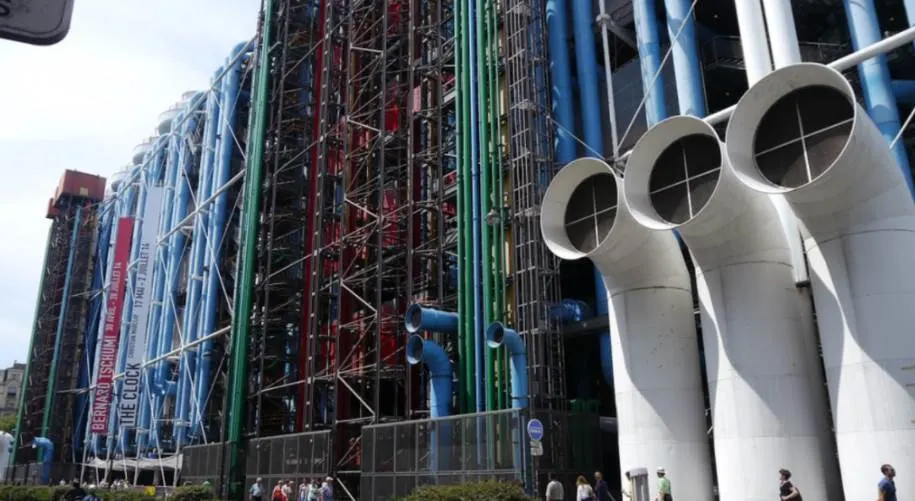One of the most peculiar buildings in all of Europe can be found in Paris.
This multicultural complex is located in the middle of Paris and can easily be recognized for its high-tech avant-garde architectural design.
In this post, you’ll discover the ultimate list of facts about the Centre Pompidou, an iconic attraction in the French capital.
1. What is the Centre Pompidou?
The Centre Pompidou, also known by its English name, the Pompidou Centre or its local name, the Beaubourg, is a multicultural complex bringing together various forms of art.
These include:
- The Bibliothèque Publique d’Information (Public Information Library).
- IRCAM, a centre for music and acoustic research.
- The Musée National d’Art Moderne – The Museum of Modern Art
The Museum of Modern Art is the biggest museum of modern art in Europe. Various exhibitions are held every year in the complex as well.

2. Where is the Centre Pompidou Located?
We can find the complex in the 4th arrondissement of Paris, in the Beaubourg area. That’s also the reason why the locals call the building “Le Beaubourg.”
The complex is located right in the historical centre of Paris, at a stone’s throw distance from the Notre-Dame Cathedral and one of the biggest museums in the world, the Louvre.
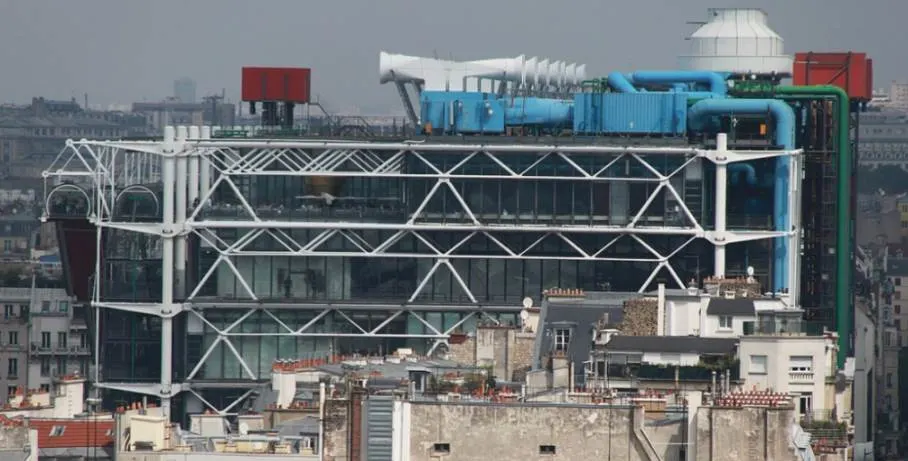
3. Why was the Centre Pompidou built?
In the 1960s, the idea to move “Les Halles” was proposed. Les Halles was the central fresh food market in Paris.

There was an urgent need for a couple of things, and instead of looking for separate locations, one location was chosen to build a free public library (which didn’t exist at the time), the museum of modern art and eventually also IRCAM.
The idea behind this move was to renew the idea that Paris is a leading city in terms of culture and art.
What was the reaction of the Parisians? They were rather sceptical regarding the destruction of their beloved market rather than one of excitement about the new construction.
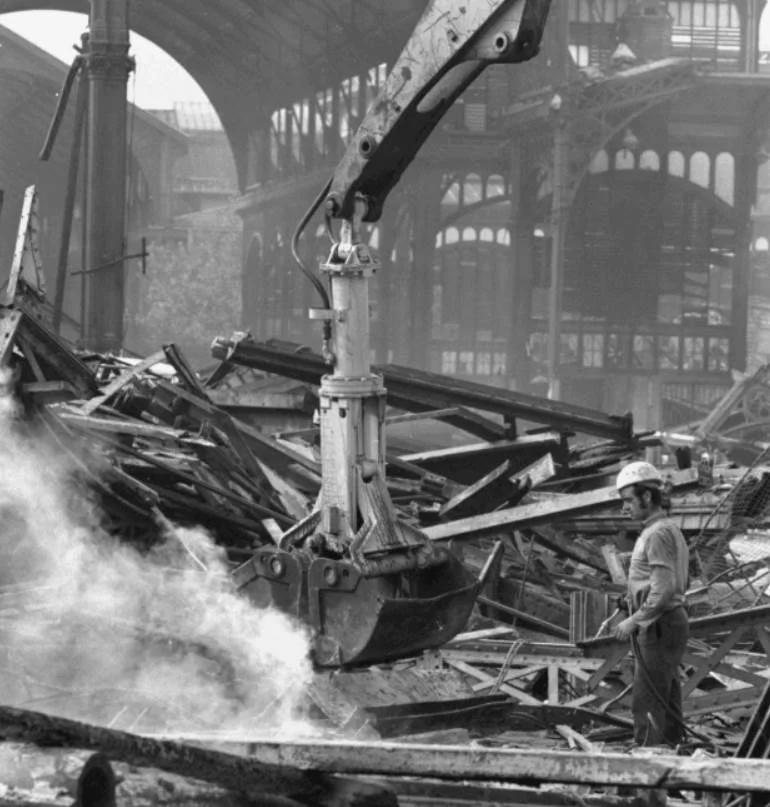
4. Who created the Centre Pompidou?
For the first time in France, an architectural competition was held which allowed international entries to decide how the cultural centre would look like.
There were a total of 681 entries and entry number 493 was the design created by Italian architect Renzo Piano and the English architect Richard Rogers. Renzo Piano is also known to have created the design of The Shard in London.
Remarkably, it was the only design in the entire competition that only used half of the available space on the location.
World-renowned architects Oscar Niemeyer, Jean Prouvé and Philip Johnson chose the “radical architectural design” of the young architects.
5. In which style is the Centre Pompidou built?
One could arguably say that the design of the Centre Pompidou is a monstrosity in a city with magical buildings that go back many centuries.
But then again, while taking a second look, this unique and peculiar design gives it something special which simply has to be appreciated somehow.
What we have here is a building that is defined as an “inside-out” building in high-tech architectural design. It has its structural system, mechanical systems, and circulation exposed on the exterior of the building.
A perfect definition of the building was made in an issue of “National Geographic” which referred to it as a “love at second sight building.”
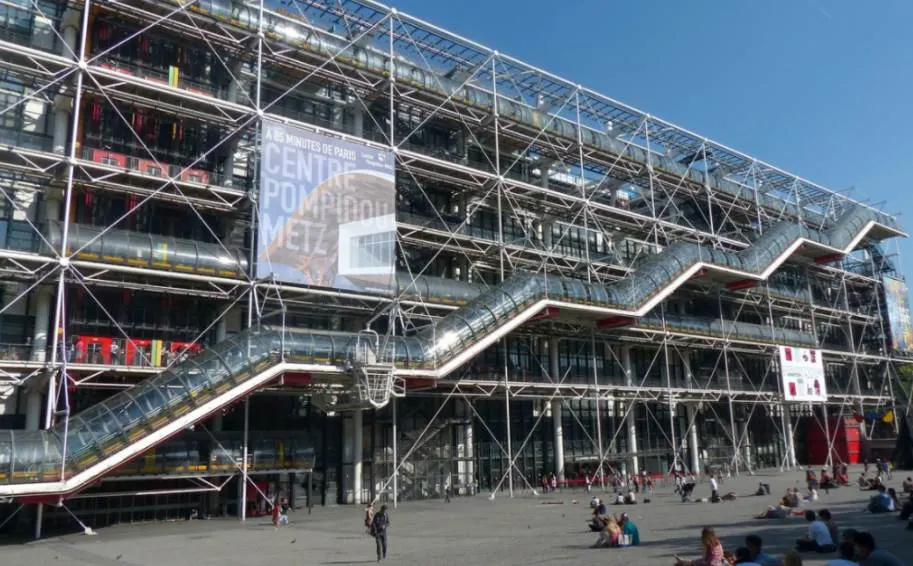
6. How many people visit the Centre Pompidou?
The Centre Pompidou is extremely popular and has millions of tourists visiting every year. In the first two decades of its existence, it had welcomed more than 145 million visitors.
This did, however, include non-paying visitors as well, who just rode the escalators outside of the building to get some nice views. These visitors haven’t been counted anymore since 2006.
Unfortunately, this huge success wasn’t without problems, as the number of visitors was 5 times the 8,000 daily visitors that were expected.
The most visited place is the Museum of Modern Art which welcomes nearly 4 million people every year, followed by the public library which has nearly 2 million visitors.
7. How did the Centre Pompidou get its name?
The Centre Pompidou was commissioned by Georges Pompidou who was the President of France from 1969 until 1974.
Unfortunately, he didn’t live to see the completed building as Georges Pompidou died in 1974 at the age of 62.

8. When was the Centre Pompidou constructed?
The Centre Pompidou was constructed by the French Construction company “Vince,” stylized as “VINCI” and formerly known as GTM.
Construction of the building started in 1971 and it was finished by 1977. It was inaugurated on January 31, 1977, by the successor of Georges Pompidou, French President Valéry Giscard d’Estaing.
9. What is high-tech architecture?
High-tech architecture, which is used in the design of the Centre Pompidou is also known as structural expressionism.
It’s a type of late modern architectural style that emerged in the 1970s and uses elements of high-tech industry and technology in building design. This was a perfect fit for the Centre Pompidou. It houses the Museum of Modern Art after all.
10. What is the Place Georges Pompidou?
The only design in the architectural competition that had an open space in front of the building was the winning one of the Rogers & Piano team.
Right now this open space is known as the “Place Georges Pompidou” and is most famous for its street performers, most notably mimes, human statues and jugglers.
But that’s not all. The place is the location of several attractions such as bands playing, sketch artists, painters and even skateboarding competitions.
It attracts a lot of artists of all kinds. What else can we expect to happen in front of an epic cultural centre as the Centre Pompidou, right?
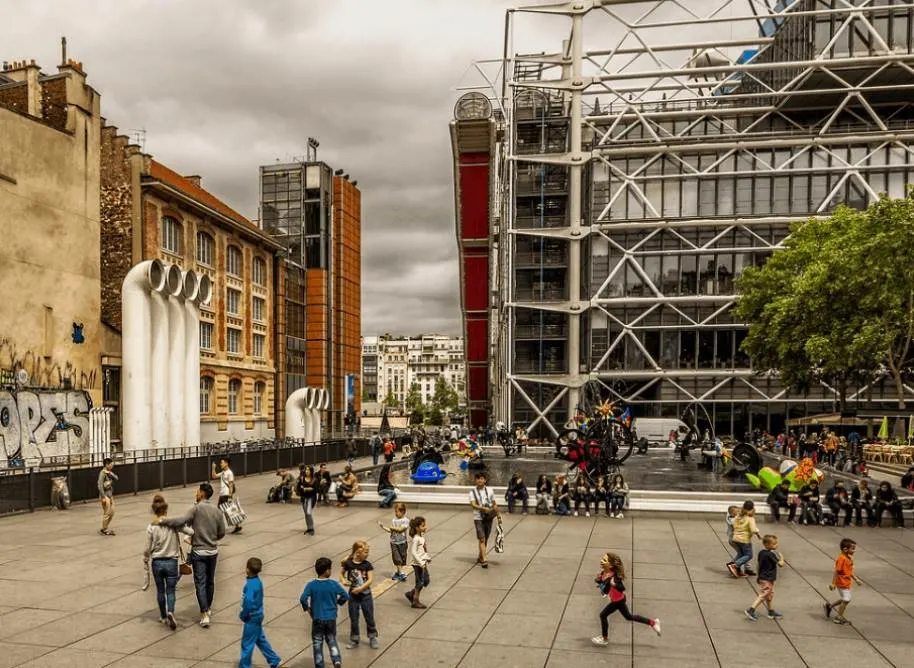
11. There’s a peculiar fountain nearby
There’s another place next to the Centre Pompidou which is called the “Place Stravinsky.” It’s named after Igor Stravinsky, one of the most influential Russian composers of the 20th century.
In this place, you can also find the “Stravinsky Fountain,” which was opened in 1983 and is described as a “whimsical fountain” containing 16 sculptures that move and spray water around.
The fountain basin is about 580 square meters (6,200 square ft) big and has black mechanical sculptures that were created by Swiss sculptor Jean Tinguely, and brightly coloured sculptures that were created by French-American sculptor Niki de Saint Phalle.
All sculptures are based on the compositions of Igor Stravinsky.

12. There’s more than one Centre Pompidou
Apart from the opening of multiple regional branches all over France, Centre Pompidou has been such a success that it also has expanded internationally, much like the success of wax museum Madame Tussauds which also has branches all over the world.
The main branch earns from the compensation of using the brand name and from the use of the collection in temporary exhibitions. The branch in Malaga, which serves as a pop-up version of the main branch, pays the Centre Pompidou about 1 million Euros a year for this.
The regional branches are located in Metz, Chaumont, Maubeuge, Libourne and a planned branch in Massy.
The international branches are located in Málaga (Spain), Brussels (Belgium), Hong Kong (China), Shanghai (China), Dhahran (Saudi-Arabia)and Mexico and Brazil (pop-up versions).

13. The Centre Pompidou has American friends
The year the Centre Pompidou was inaugurated, which was 1977, an American Philanthropist and art collector who lived in Houston started a foundation to support the centre.
Dominique de Menil founded the “Centre Pompidou Foundation,” a charity organization dedicated to acquiring donations of art for the museum.
It has been able to acquire over 450 pieces of art with an estimated value of over $50 million.
How nice to have friends like that, isn’t it?
14. Who owns the Centre Pompidou?
The Centre Pompidou is a national museum and therefore owned by the French Government.
It is subsidised by the ministry of culture of France, which is also in charge of appointing its directors. Most of the budget is used to pay the staff.
The museum is also generating revenue from entrance fees, travelling exhibitions and usage of the brand name by international branches, which cover nearly 40% of the yearly expenses.
15. Georges Pompidou was a funny man
While reflecting on the architectural competition, the struggle to create a massive project like that and the celebrations of actually winning a competition with 681 entries, architects Renzo Piano and Richard Rogers recall a funny anecdote.
The young architects appeared in the Élysée Palace as a bunch of bearded hippies with wide pants and rainbow coloured Mickey Mouse t-shirts. On the other hand, all the politicians, as expected, appeared spick and span with freshly polished shoes, suits and ties.
So it was funny to see that one of the guys in the architect’s entourage also wore a suit and tie, dressed the same as the politicians.
George Pompidou‘s reaction to that guy?
“You are the capitalist!”
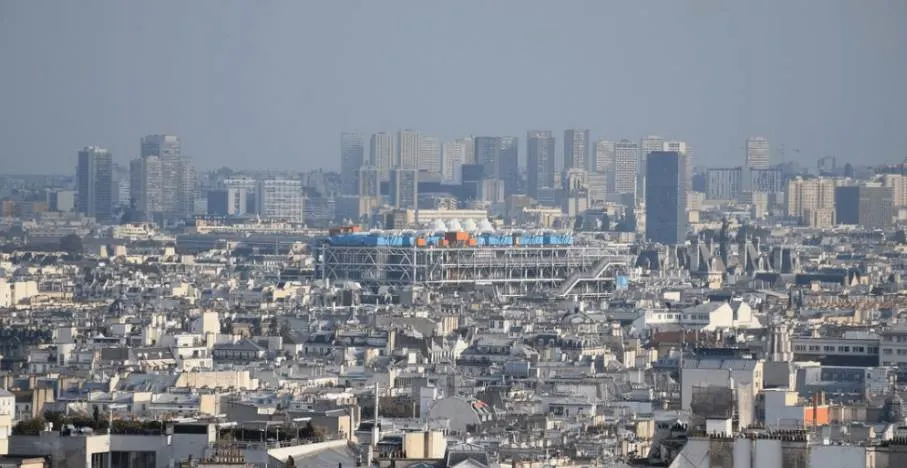
More fun and interesting facts about the Centre Pompidou
16. The Centre Pompidou is located near the Rue Montorgueil, a street for true Parisians and the Marais, the aristocratic district in Paris during the Middle Ages.
17. The design of the building has always been controversial. In a sense, the high-tech architectural style of the building, in total contrast with its surrounding medieval neighbours, is a perfect reflection of the young and radical architects that created it for the conservative establishment.
18. Just outside the Centre Pompidou, you can find a mobile sculpture called “Horizontal” which was created by American sculptor Alexander Calder. It was placed in front of the centre in 2012 and is 7.6 meters (25 ft) tall.
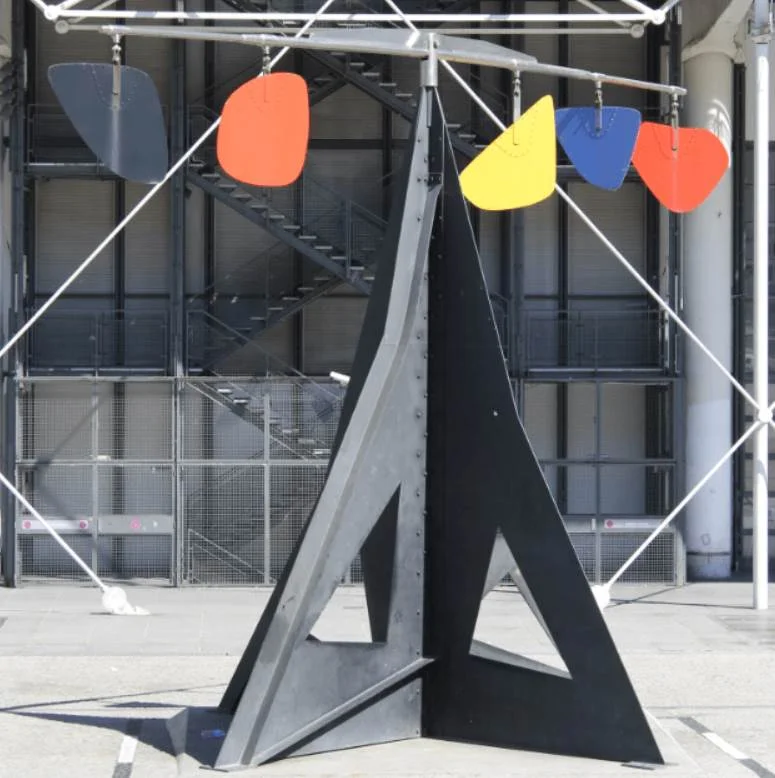
19. Renzo Piano and Richard Rogers weren’t the only ones that worked on the design of the Centre Pompidou. They had help from another Italian architect named Gianfranco Franchini. Unlike his colleagues, he didn’t go on to create internationally renowned buildings and focused on small-scale projects in his native Italy.
20. The total land area the Centre Pompidou is located on is 2 hectares (5 acres) and the total floor area of the centre itself is 103,305 square meters (1,111,965.77 square feet).
21. The entire structure consists of 7 levels. At the highest point, the building is 45.5 meters (149 ft) high. It’s 166 meters long and 60 meters wide.
22. The Centre Pompidou has a total of 50,000 pieces of art altogether. The collection includes paintings, sculptures, drawings and photography. This makes it one of the largest art collections in the world.
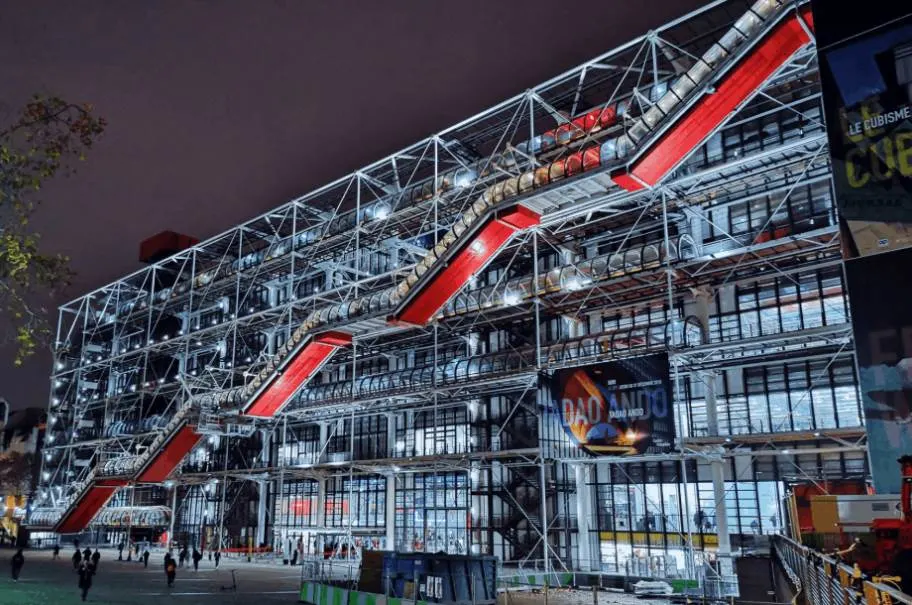
23. If you expect to see over 50,000 pieces of art in the Centre Pompidou then you might be up for a surprise. Less than 1,000 are on public display in Paris. Most are in storage and some are being rented by regional or international branches.
24. The building uses a huge amount of steel. 15 million kilos of steel to be precise. The glass surface has a total size of 11,000 square meters (49,212 square ft) and 50,000 cubic metres (1,765,733 cubic feet) of reinforced concrete was used during construction.
25. A lot of visitors come to the frequent exhibitions that are being held at the Centre Pompidou. One exhibition broke all records though. In 2013, a “Dali” exhibition attracted over 790,000 visitors. That was an average of over 7,000 visitors a day!
26. Le “Musée National d’Art Moderne” covers 2 entire floors of the Centre Pompidou and is one of the largest museums of modern art and one of the most visited museums in the entire world.
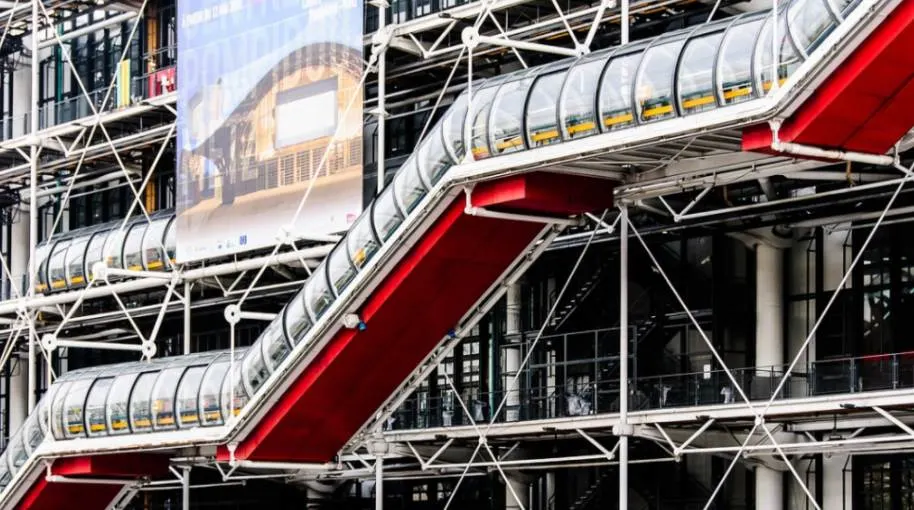
27. The building looks a bit like a space station, no? Well, the director of the James Bond movie “Moonraker” must have thought the same, as he integrated a fifth-floor room in the Centre Pompidou into the movie.
It was featured as the office of “Holly Goodhead,” played by Lois Chiles, which was located in a space station of the villainous “Hugo Drax,” played by Michael Lonsdale.
Watch the clip which was shot in the Centre Pompidou below:
28. Some of the most amazing views in Paris can be seen on the rooftop of the Centre Pompidou. To reach it, you’ll need to walk through the tubes of the entire “space station” though.
29. One of the most fascinating facts about the Centre Pompidou is that the tubes hanging outside of the building, giving it its unique “inside-out” design, are colour-coded by functionality.
- Green pipes are used for plumbing
- Blue ducts are for climate control
- Electrical wires are encased in yellow
- The circulation elements for health and safety are encased in red pipes.
